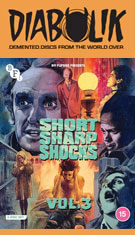
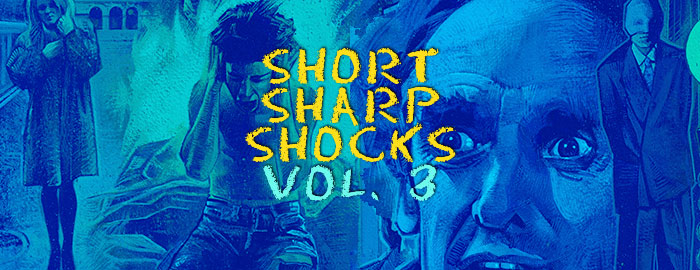
B&W/Color, 1943-1986, 223 mins
BFI (Blu-ray) (UK RB HD)
B&W/Color, 1943-1986, 223 mins
BFI (Blu-ray) (UK RB HD)


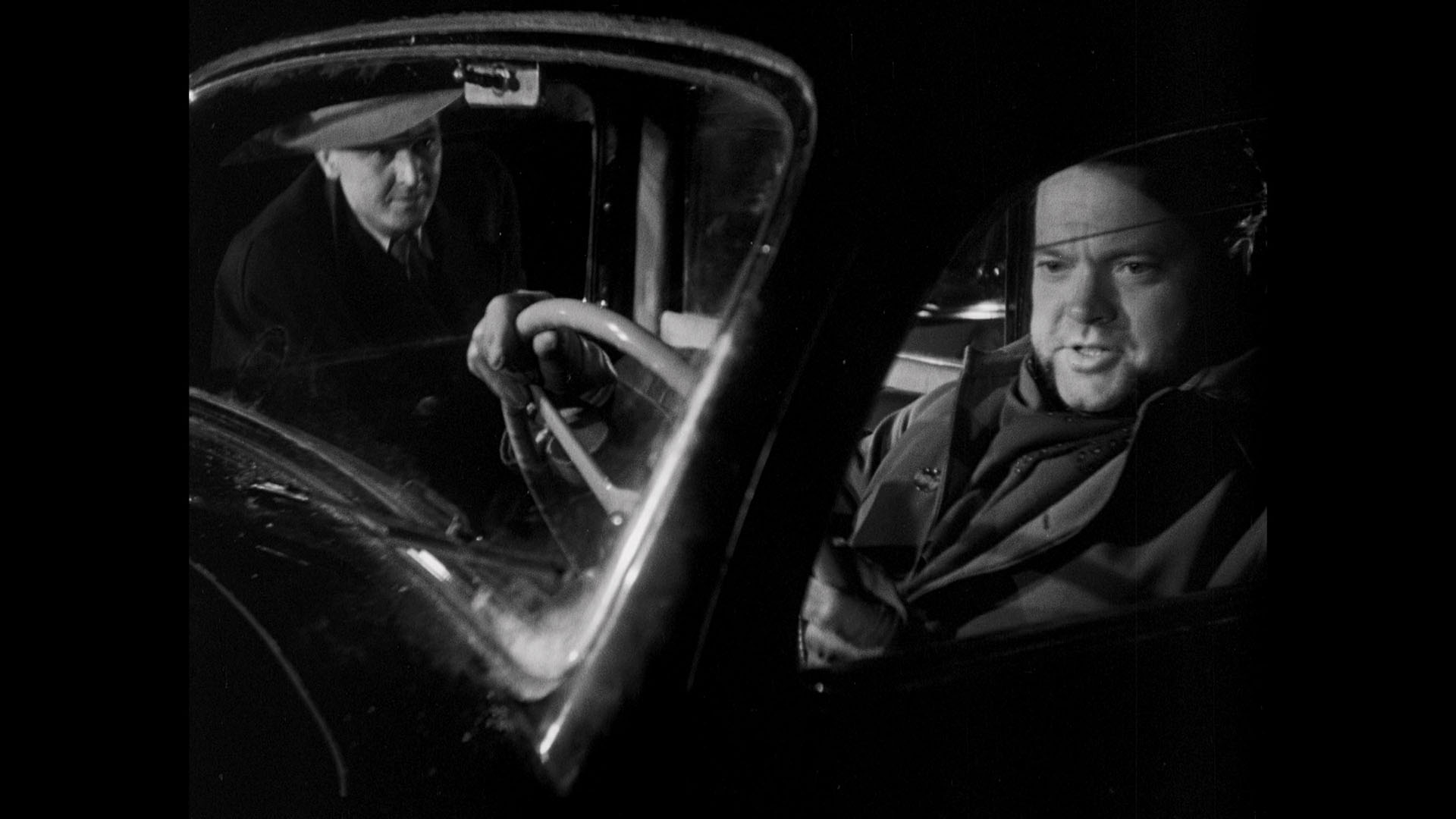 break following the inaugural Short Sharp Shocks in 2020 and Short Sharp Shocks Vol. 2 in 2021, the BFI's Flipside series returned in 2023
break following the inaugural Short Sharp Shocks in 2020 and Short Sharp Shocks Vol. 2 in 2021, the BFI's Flipside series returned in 2023 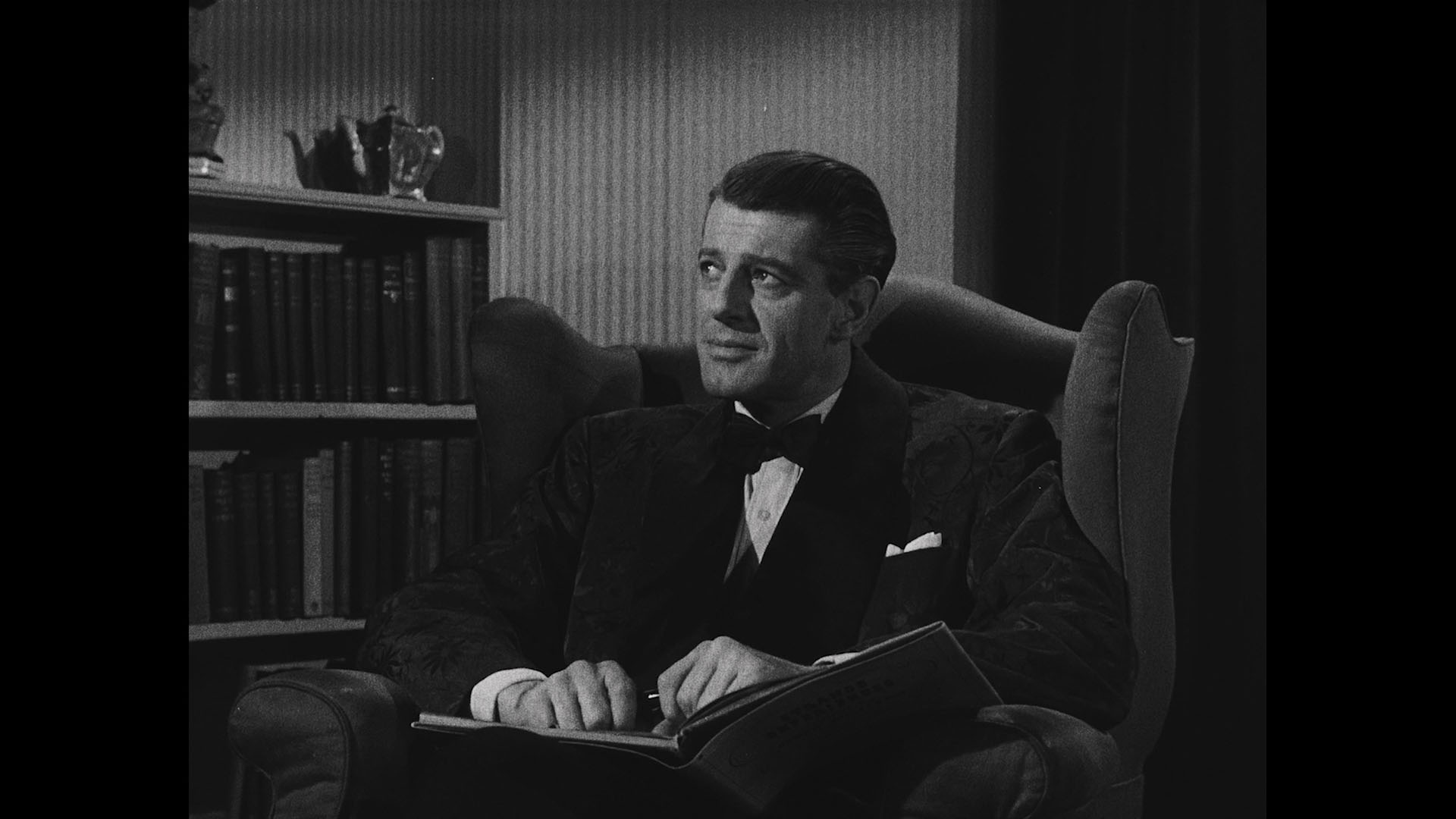 with a welcome two-disc Blu-ray set of chilling cinematic nuggets ranging from fleeting cautionary industrial shorts to evocative spook tales and bizarre cult curios. By now most folks are probably familiar with the idea here, with the first disc devoted to black-and-white works and the second going more modern and baroque with a higher blood quotient as well.
with a welcome two-disc Blu-ray set of chilling cinematic nuggets ranging from fleeting cautionary industrial shorts to evocative spook tales and bizarre cult curios. By now most folks are probably familiar with the idea here, with the first disc devoted to black-and-white works and the second going more modern and baroque with a higher blood quotient as well. 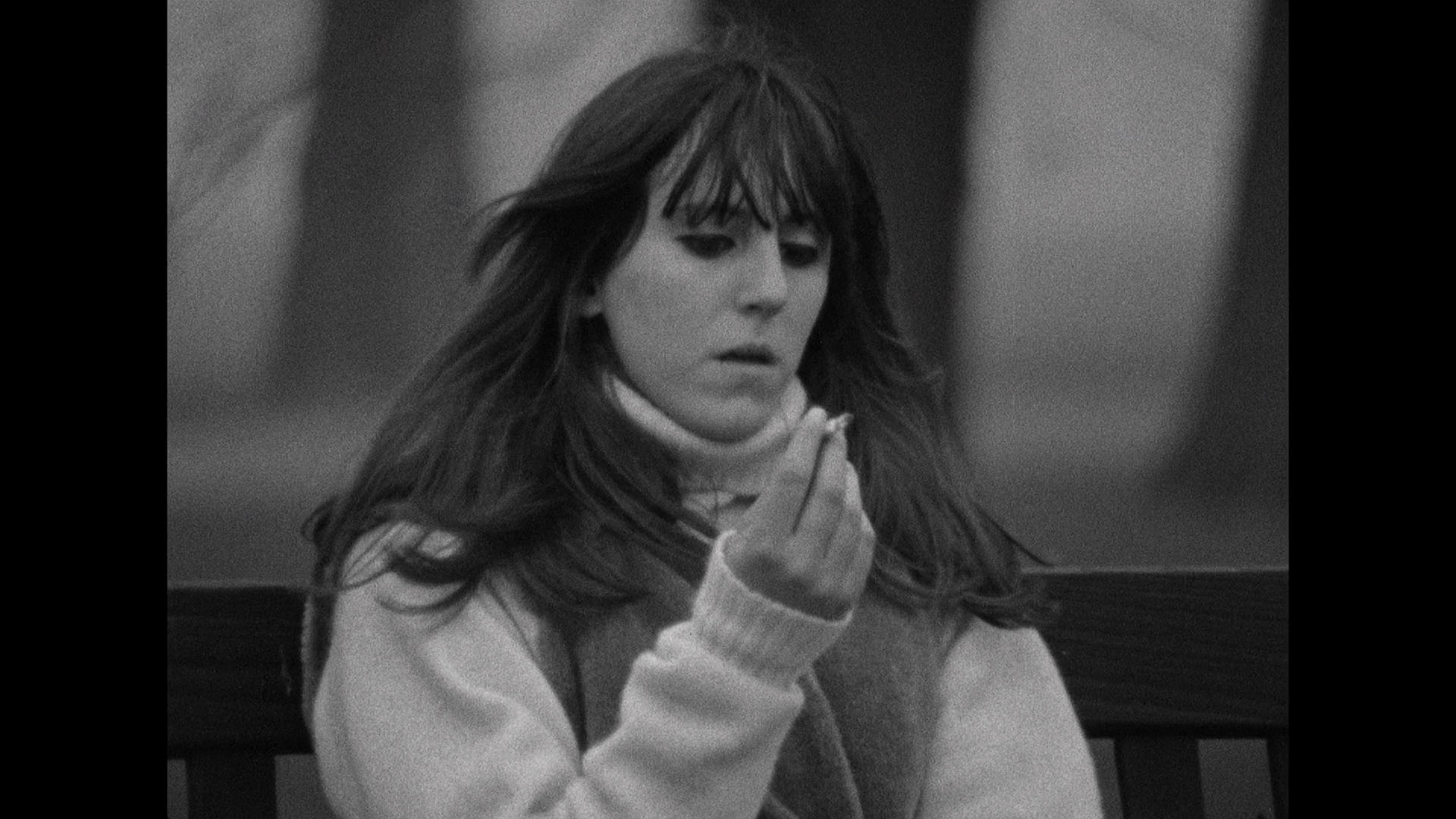 A Strange Experience shorts
A Strange Experience shorts 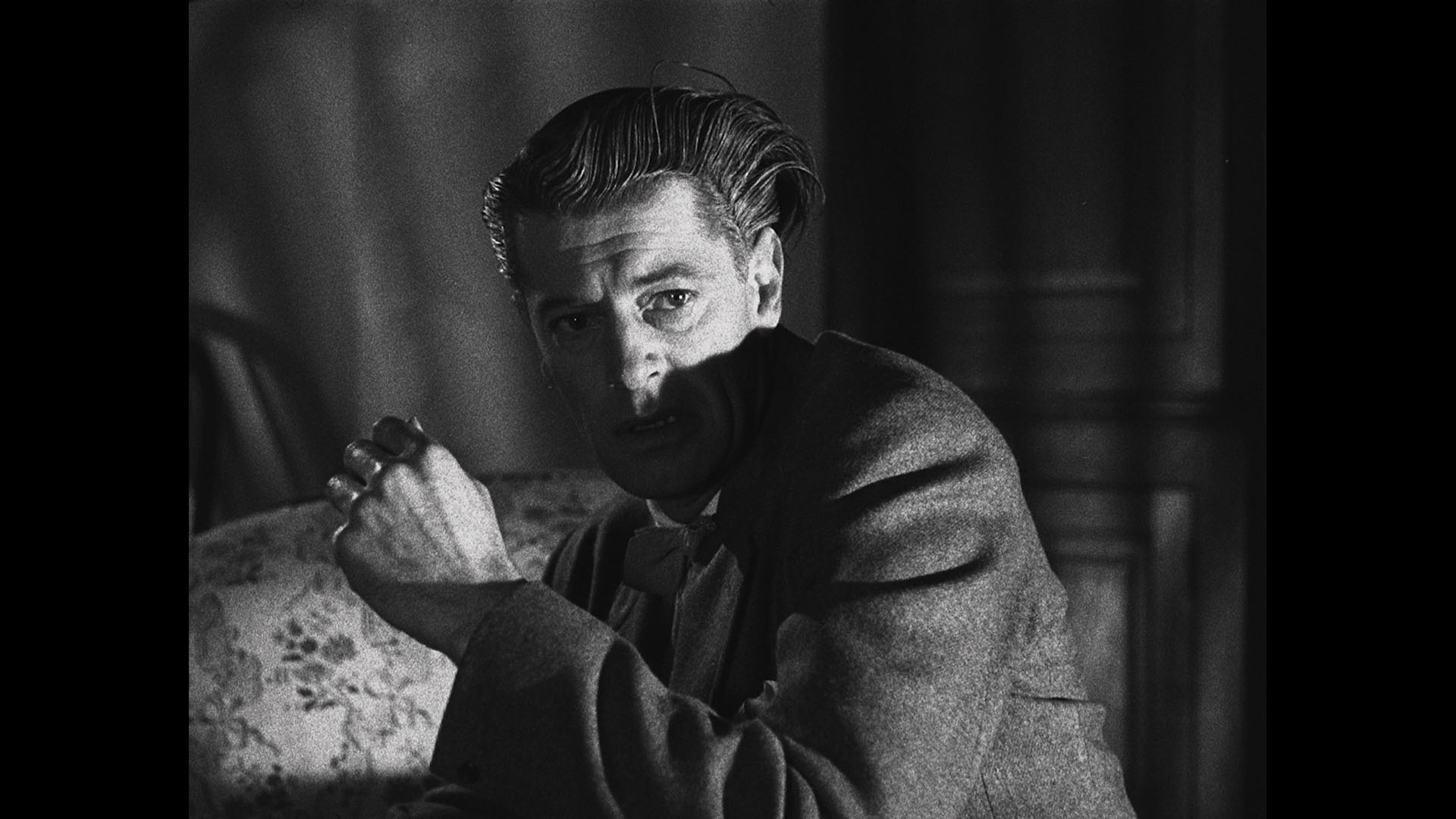 on part one, here featuring 1956's Grandpa's Portrait (3m26s), a jokey vignette with Peter Williams narrating the story of an ancestral painting that serves as a perpetual good luck charm until a fateful day involving a sporting event, and the same year's Old Silas (3m32s), with Williams handling a brandy snifter while a murderer and a fateful clock figure in the aftermath of a crime.
on part one, here featuring 1956's Grandpa's Portrait (3m26s), a jokey vignette with Peter Williams narrating the story of an ancestral painting that serves as a perpetual good luck charm until a fateful day involving a sporting event, and the same year's Old Silas (3m32s), with Williams handling a brandy snifter while a murderer and a fateful clock figure in the aftermath of a crime.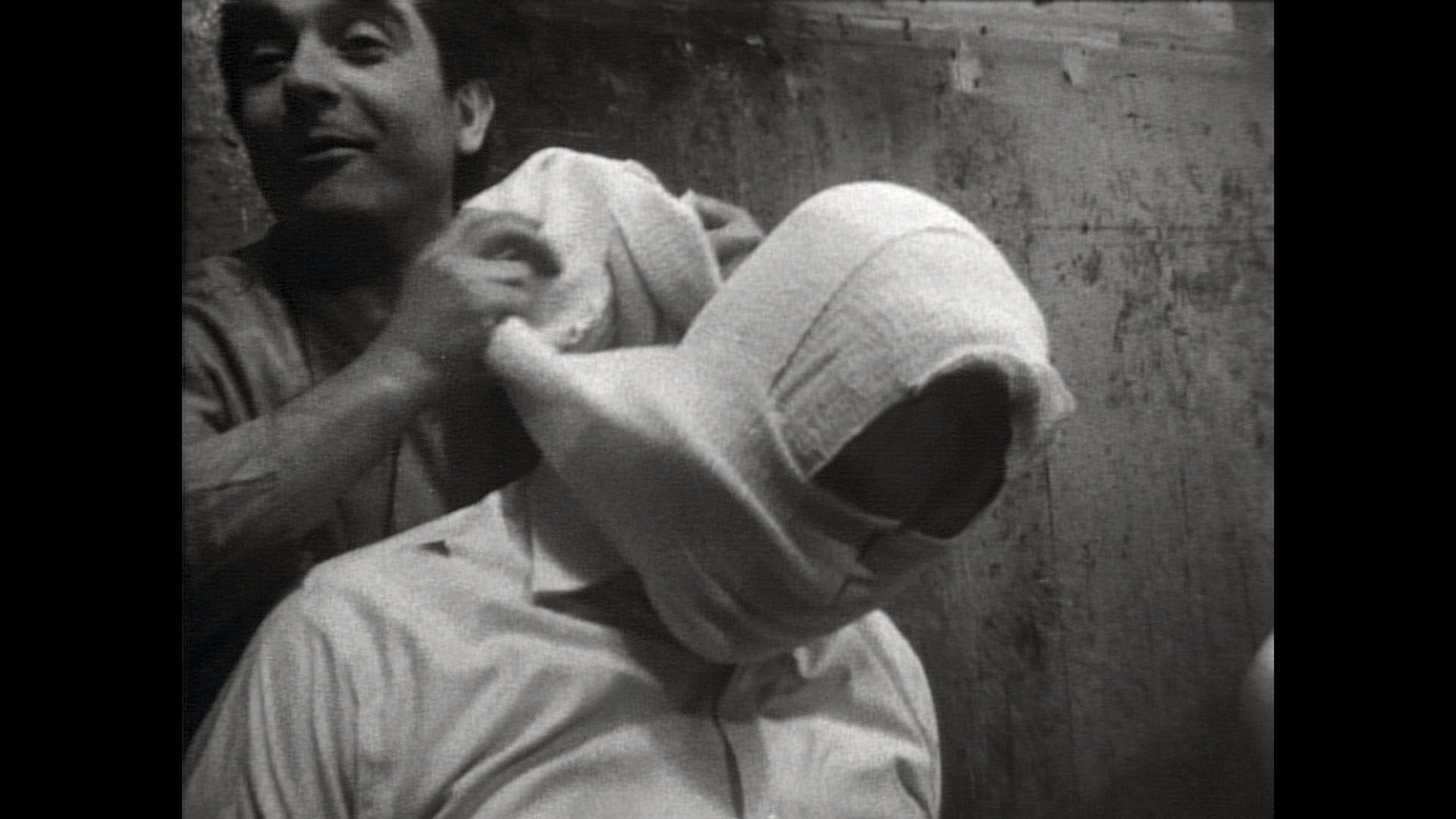 Things get much rougher on disc two with 1973's Skinflicker (42m57s), a fascinating Tony Bicât short for the BFI that
Things get much rougher on disc two with 1973's Skinflicker (42m57s), a fascinating Tony Bicât short for the BFI that 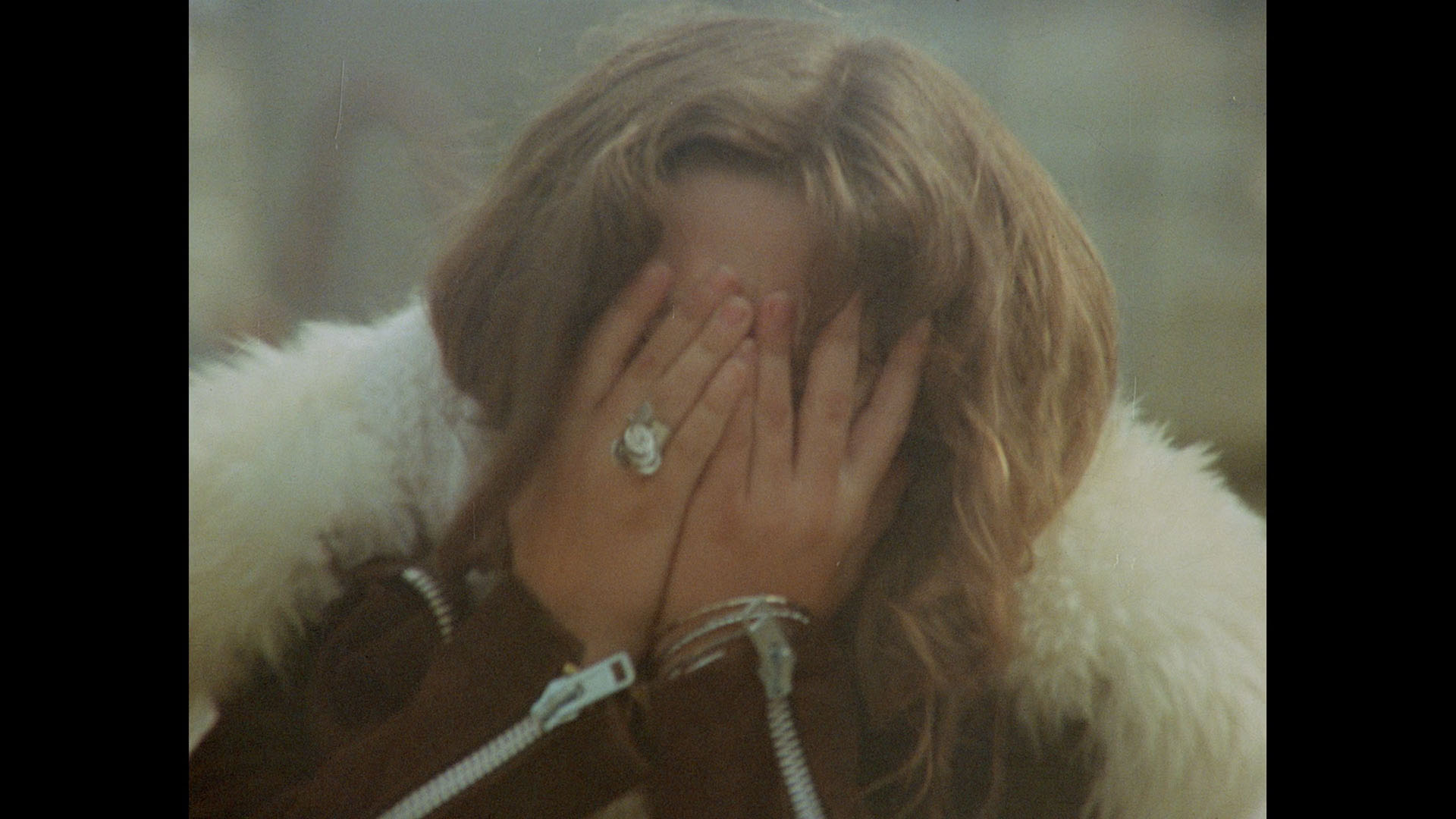 easily counts as the most startling entry here. An ominous foreword informs us that this government document "displays the kidnapping and brutal murder of a public man. It is not to be shown to unauthorised persons. The kidnappers and murderers made this record of the crime themselves. They filmed their vile act in cold blood. Why? Because they thought it was funny." Yep, what we have here is really ground zero for the found footage horror film passing itself off as reality, way before Cannibal Holocaust, The Blair Witch Project, Man Bites Dog, and so on. In fact, it even predates the nihilistic approach of Last House on the Left and company as we see a stag movie creator recruited to shoot and document the activities of a trio of revolutionary miscreants determined to abduct and execute a government official in between diatribes to the camera. It's definitely obvious the whole thing is staged thanks to some recognizable actors (most notably a very intense Henry Woolf, later one of the Time Warpers in The Rocky Horror Picture Show), but the tactics here are astonishing to witness given how many subsequent films used them well into the 2000's. In fact, even if you think you know how this will wrap up (a la Cannibal Holocaust), there's an extra gruesome grace note thrown in that still packs a punch. While all of the other shorts here are in pristine condition, this one has an intentionally rough and distressed 8mm look appropriate for the subject matter. The fleeting 1973 public service announcements Broken Bottle (29s) and Don’t Fool Around with Fireworks (42s) are self-explanatory, implying horrific violence inflicted on youngsters
easily counts as the most startling entry here. An ominous foreword informs us that this government document "displays the kidnapping and brutal murder of a public man. It is not to be shown to unauthorised persons. The kidnappers and murderers made this record of the crime themselves. They filmed their vile act in cold blood. Why? Because they thought it was funny." Yep, what we have here is really ground zero for the found footage horror film passing itself off as reality, way before Cannibal Holocaust, The Blair Witch Project, Man Bites Dog, and so on. In fact, it even predates the nihilistic approach of Last House on the Left and company as we see a stag movie creator recruited to shoot and document the activities of a trio of revolutionary miscreants determined to abduct and execute a government official in between diatribes to the camera. It's definitely obvious the whole thing is staged thanks to some recognizable actors (most notably a very intense Henry Woolf, later one of the Time Warpers in The Rocky Horror Picture Show), but the tactics here are astonishing to witness given how many subsequent films used them well into the 2000's. In fact, even if you think you know how this will wrap up (a la Cannibal Holocaust), there's an extra gruesome grace note thrown in that still packs a punch. While all of the other shorts here are in pristine condition, this one has an intentionally rough and distressed 8mm look appropriate for the subject matter. The fleeting 1973 public service announcements Broken Bottle (29s) and Don’t Fool Around with Fireworks (42s) are self-explanatory, implying horrific violence inflicted on youngsters 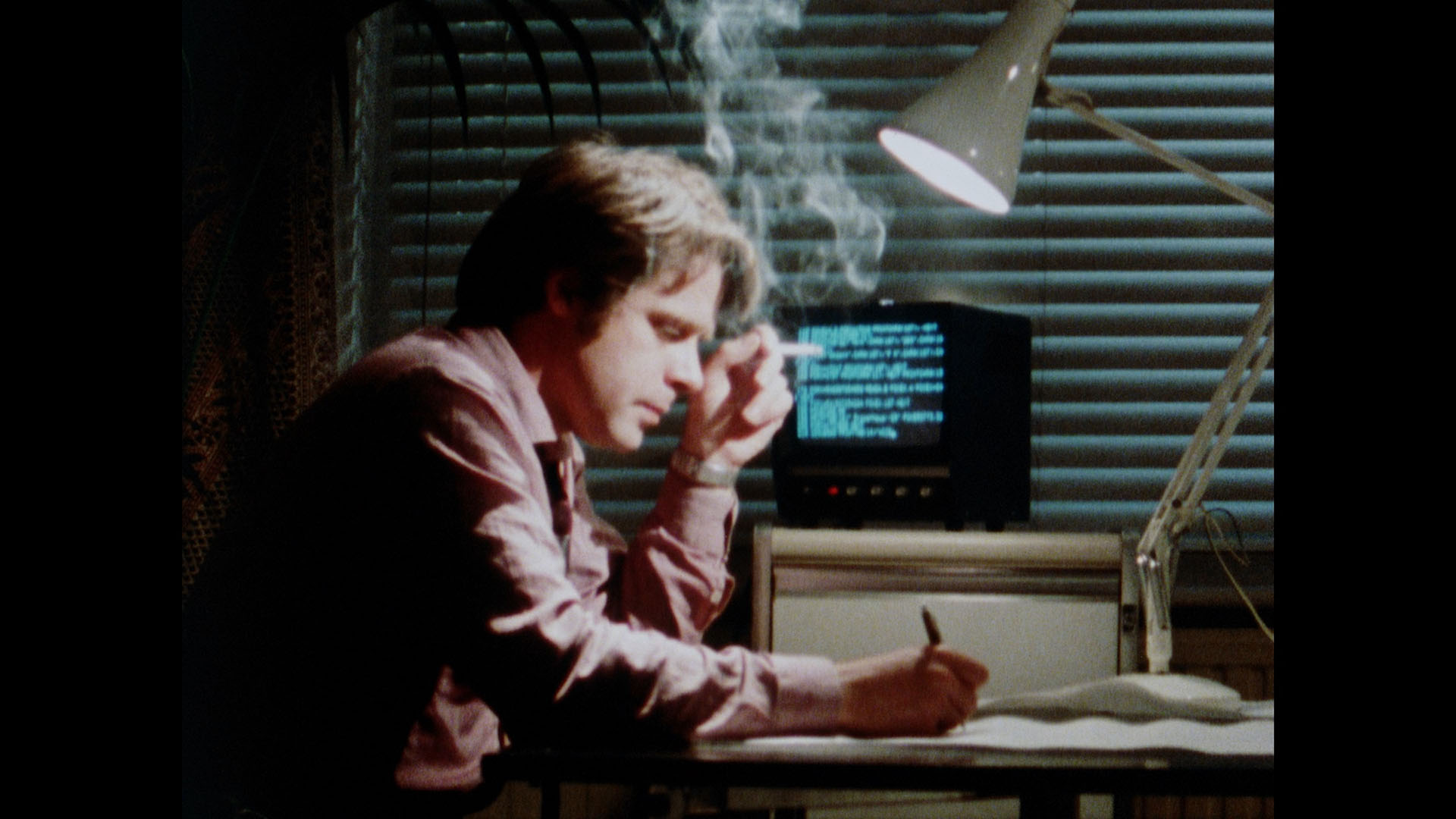 when they don't pay attention to their surroundings or explosive party devices.
when they don't pay attention to their surroundings or explosive party devices. 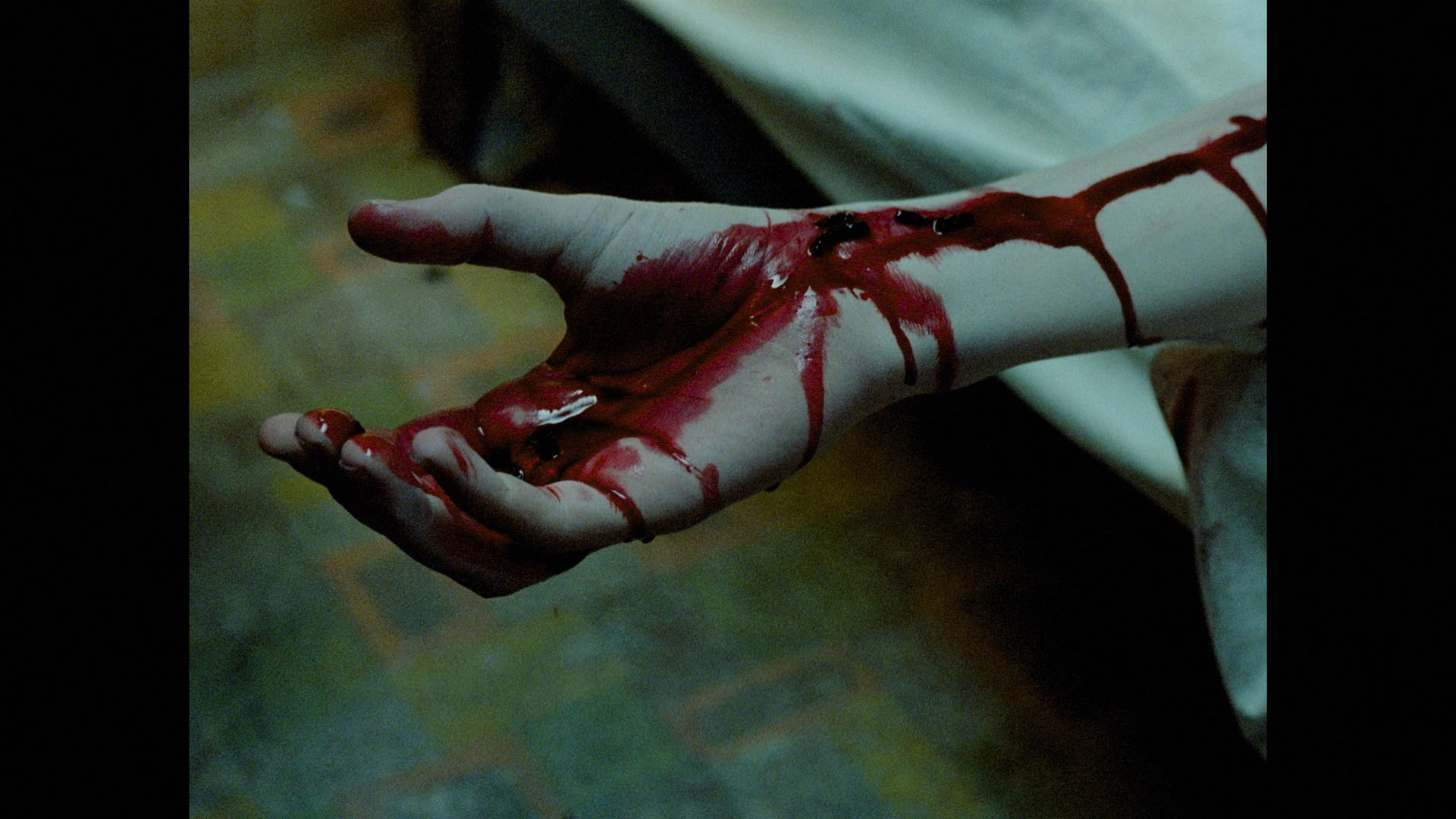 Mallory (Jack Galloway) plays a game demo tied to an Orwellian master plan at work on the population. Finally in 1985's Wings of Death (21m15s) by Nichola Bruce and Michael Coulson (which famously played as the opening short for A Nightmare on Elm Street in the U.K.) is a sickly colorful and stylized depiction of a heroin addict (Matthew Vaughn regular and Caravaggio poster boy Dexter Fletcher) spends his apparently final hours at a seedy hotel filled with lowlifes and a creepy doll-mutilating girl. That's pretty much it for the plot, but the mood and eye candy here are the real stars with a grotesque vibe that puts it close enough to the horror genre to count. In "Touch a Nerve" (25m59s), Bicât (brother of The Reflecting Skin composer Nick Bicât) talks about his approach to screenwriting, his affinity for horror films, the process of finding actors for a fairly grueling project (with a reluctant Woolf being a choice he always had in mind), and the moral points he was trying to get across. In "A Game of Two Halves" (27m55s), Lowe goes into great depth about his engineering background, the process of making The Terminal Game thanks to a spec script submission, and some very funny tales about casting and shooting. "Playing Music" (8m21s) is a new interview with composer Colin Towns, who composed The Terminal Game after his landmark work on The Haunting of Julia and explains how he came up with some of the experimental, electronic approach to the story. Finally in "Flying High" (31m22s), Bruce and Coulson discuss the making of Wings of Death, their art college backgrounds, the height of the punk scene at the time that influenced graphic design and their film, and the metaphorical aspects of heroin imposed on the film by the BFI. Also included are three Skinflicker galleries (1m4s script pages, 8m56s images, and 2m8s ephemera), a trailer for The Terminal Game, a 6m59s reel of silent behind-the-scenes footage from Wings of Death, and galleries for Wings of Death featuring photos by Steve Pyke (3m50s) and ephemera (1m2s) mostly consisting of wild concept paintings. The first pressing also features an illustrated insert booklet with new essays by Bob Bentley, Nichola Bruce, and Tony Bicât.
Mallory (Jack Galloway) plays a game demo tied to an Orwellian master plan at work on the population. Finally in 1985's Wings of Death (21m15s) by Nichola Bruce and Michael Coulson (which famously played as the opening short for A Nightmare on Elm Street in the U.K.) is a sickly colorful and stylized depiction of a heroin addict (Matthew Vaughn regular and Caravaggio poster boy Dexter Fletcher) spends his apparently final hours at a seedy hotel filled with lowlifes and a creepy doll-mutilating girl. That's pretty much it for the plot, but the mood and eye candy here are the real stars with a grotesque vibe that puts it close enough to the horror genre to count. In "Touch a Nerve" (25m59s), Bicât (brother of The Reflecting Skin composer Nick Bicât) talks about his approach to screenwriting, his affinity for horror films, the process of finding actors for a fairly grueling project (with a reluctant Woolf being a choice he always had in mind), and the moral points he was trying to get across. In "A Game of Two Halves" (27m55s), Lowe goes into great depth about his engineering background, the process of making The Terminal Game thanks to a spec script submission, and some very funny tales about casting and shooting. "Playing Music" (8m21s) is a new interview with composer Colin Towns, who composed The Terminal Game after his landmark work on The Haunting of Julia and explains how he came up with some of the experimental, electronic approach to the story. Finally in "Flying High" (31m22s), Bruce and Coulson discuss the making of Wings of Death, their art college backgrounds, the height of the punk scene at the time that influenced graphic design and their film, and the metaphorical aspects of heroin imposed on the film by the BFI. Also included are three Skinflicker galleries (1m4s script pages, 8m56s images, and 2m8s ephemera), a trailer for The Terminal Game, a 6m59s reel of silent behind-the-scenes footage from Wings of Death, and galleries for Wings of Death featuring photos by Steve Pyke (3m50s) and ephemera (1m2s) mostly consisting of wild concept paintings. The first pressing also features an illustrated insert booklet with new essays by Bob Bentley, Nichola Bruce, and Tony Bicât.![]()